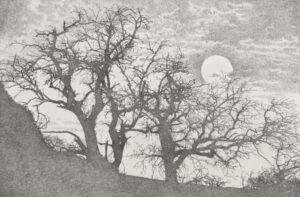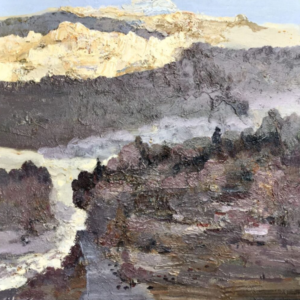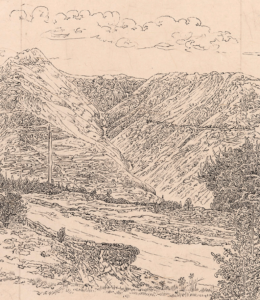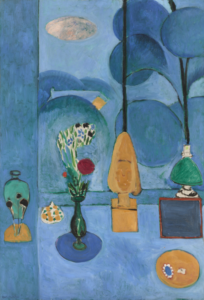Xuegeng Gu’s series, Meditations on Withered Lotus, uses the image of the “withered lotus” to delve into profound reflections on life, philosophy, and the passage of time.
In Chinese culture, people often revere the lotus for its pristine beauty, associating it with purity and enlightenment. Fresh blossoms symbolize clarity and transcendence, yet the withered lotus often embodies decay and impermanence, a far cry from mainstream aesthetic tastes. However, among Chinese literati and artists, the withered lotus holds a more nuanced appeal, symbolizing “tragic beauty,” a raw elegance that evokes complex emotions and deeper introspection.
In Gu’s work, the withered lotus transcends its mere form; it becomes a symbol of life’s cycles and spiritual elevation. The imagery captures nature’s process of flourishing and fading, mirroring humanity’s own journey through growth and transformation. In his brushwork, colors, and abstract compositions, Gu brings the withered lotus to life with palpable energy and emotion, creating scenes that are both unrestrained and tensely poignant.
Two standout subseries, Reflections on Life and Philosophical Meditations, offer not only striking visuals but also invite viewers to contemplate mortality, transcendence, and human fragility. Through abstract representations of the withered lotus, Gu guides the viewer into an exploration of life, death, chaos, and dissolution—a realm beyond sensory reality, where these forces meet.
In Reflections on Life, Gu examines the beauty and vulnerability of existence. Vibrant colors like orange, yellow, and green juxtapose with the withered petals, highlighting the contrasts between life and decay. Thick impasto techniques enrich the pieces with a powerful texture, giving emotional weight to the scenes. Stems weave with the backgrounds, illustrating the tension between vitality and decline. Although full of movement, the pieces seem suspended in a dramatic stillness, capturing a moment balanced on the edge of life and death.
In Philosophical Meditations, Gu’s exploration shifts into the abstract, examining existential tensions through stark contrasts of black and white, interwoven with subtle color variations. The desiccated lotus becomes a symbol of life’s fragility while suggesting humanity’s resilience, unwavering in its search for meaning. The skeletal forms of the withered stems set against bright, turbulent backdrops convey a silent struggle, resonating with themes of impermanence and finality.
Gu’s approach to structure and form reflects his profound understanding of abstraction. Compared to Reflections on Life, the visual elements in Philosophical Meditations are simpler, with sharper, more distilled lines and shapes, as plant forms blur into abstract brushstrokes, seeming to leave the tangible world behind for a symbolic, spiritual plane. This shift represents a transition from physical reality to philosophical rumination.
The dynamic brushstrokes and bold colors in these works, coupled with the richness of oil paint’s texture, fill the canvas with energy and emotional tension. Through the sheer physicality of the oil paint, viewers sense the profound weight and texture of the medium itself, allowing an emotional resonance with the deeper content of the works. In these paintings, Gu masterfully blends the spontaneity of traditional Chinese ink techniques with the expressive freedom of Western modernist abstraction, merging cultural heritage with modern artistic sensibilities.
Xuegeng Gu’s Meditations on Withered Lotus is more than a visual experience—it is an exploration of aesthetic awareness. As people’s understanding of beauty deepens, they move beyond simple admiration for surface-level appeal, seeking instead a connection with art that embodies complex emotions and intellectual conflict. Art that resonates across generations—be it visual, musical, theatrical, or literary—often carries elements of tragedy and introspection. This deeper resonance transcends mere admiration and becomes a space for empathizing with the complexities of human emotion and existential struggle. Through this empathetic connection, art gains transformative power.
Gu’s withered lotus series exemplifies this depth of aesthetic inquiry. While the lotus often symbolizes purity in many cultures, the pristine beauty of fresh blossoms, though captivating, rarely provokes as much philosophical reflection. Meditations on Withered Lotus goes beyond mere imagery of fading beauty to contemplate beauty itself, mortality, and the cycles of renewal and hope. In these pieces, the withered lotus, traditionally a symbol of decline, comes to embody the possibility of regeneration and the continuity of life. It ceases to be merely a symbol of life’s end; instead, it speaks to the cycles of life that endure.
Reflections on Life





Philosophical Meditations





其它作品

















